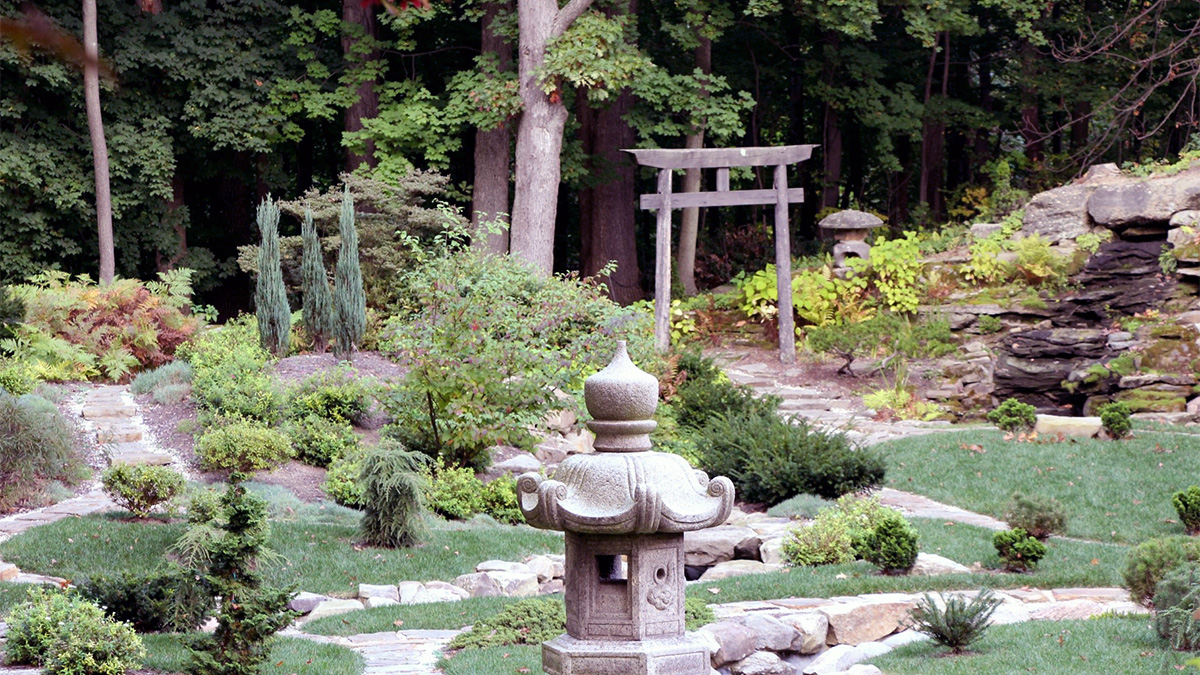Elements of a Traditional Japanese Garden You Can Recreate at Home

Traditional Japanese gardens are a timeless blend of simplicity, beauty, and natural harmony. Whether you have a small backyard or a quiet corner to spare, it is possible to recreate key elements of this style at home. With thoughtful design choices and a focus on balance, you can bring the serene spirit of a Japanese garden into your everyday life.
Related: Simple and Elegant Japanese Home Garden Design Ideas
Embrace simplicity and asymmetry
Traditional Japanese gardens are known for their restrained beauty and quiet elegance. Rather than filling every space with color or detail, these gardens leave room for the eye and mind to rest. Simplicity is key, and asymmetry plays a major role in creating a natural, unforced layout.
Instead of planting in neat rows or perfect circles, elements are placed to mimic nature’s randomness. Rocks may be grouped in uneven numbers, and plants may be arranged to look like they grew there over time. This style encourages a feeling of organic movement through the garden.
Incorporate natural elements
Stone, gravel, and sand are foundational materials in a traditional Japanese garden. Large stones often symbolize mountains or islands, while gravel and sand represent water or open sky. These materials are placed thoughtfully to balance the landscape and tell a quiet story.
Organic shapes and textures are preferred over anything overly polished or uniform. Rocks should feel weathered, and paths should curve gently rather than form straight lines. Allowing natural imperfections to remain creates a more authentic and relaxing environment.
Create a water feature
Water is considered a symbol of renewal and calm, making it an essential part of many Japanese gardens. Traditional designs often include ponds, streams, or small waterfalls that reflect the sky and add gentle movement. The sound of flowing water enhances the sensory experience and invites visitors to slow down.
At home, you can recreate this effect with a simple pond, a bubbling fountain, or even a small reflecting basin. Choosing a spot where the water can catch light or be framed by stones and greenery will make it even more impactful. Even a small water feature can transform the feel of a garden space.
Related: Best Plants for Small Ponds & Mini Water Gardens
Choose plants with meaning
Plant selection in Japanese gardens is very intentional. Evergreens like pine and cedar provide structure and symbolize endurance, while mosses create a sense of age and softness. Seasonal plants such as Japanese maples or flowering cherries offer brief but stunning highlights at certain times of the year.
Flowers are used sparingly and are chosen for their natural appearance rather than bright colors. Texture, form, and subtle shifts in tone are more important than large blooms. The goal is to create a landscape that evolves gently through the seasons without overwhelming the senses.
Add a traditional pathway
Paths in Japanese gardens are designed to slow you down and encourage mindfulness. Stepping stones, gravel trails, or natural wooden paths lead visitors through the landscape with a gentle sense of discovery. The path curves around features rather than cutting through them, offering different views along the way.
Materials like natural stone, pebbles, or rustic wood blend into the landscape rather than standing out. Spacing stepping stones unevenly or varying the size adds to the sense of a natural journey. The path itself becomes part of the experience, not just a way to get from one place to another.
Introduce symbolic structures
Simple structures like stone lanterns, arched bridges, or modest wooden gates are used thoughtfully in Japanese garden design. These elements are not just decorative; they often carry symbolic meanings tied to transition, protection, or enlightenment. For example, a bridge might represent a passage from the earthly world to a sacred space.
When adding these features at home, placement is crucial. A lantern tucked among low plants or a gate framing a distant view can feel much more natural than a centerpiece dropped into an open space. Less is more when it comes to adding structural elements.
Focus on borrowed scenery (shakkei)
Shakkei, or “borrowed scenery,” is a concept that extends the visual boundaries of a garden. Rather than fencing a space in completely, designers will frame distant hills, neighboring trees, or even architectural features as part of the view. This technique makes a small garden feel much larger and more connected to its surroundings.
You can recreate shakkei by using taller plants or structures to frame a pleasing background. Even in urban settings, a glimpse of a neighboring tree or sky through a gate can feel intentional and expansive. The key is to work with what you have rather than trying to block it out.
Balance light and shadow
Light and shadow play a quiet but powerful role in Japanese gardens. The contrast between sunlit leaves, shaded pathways, and dappled rock surfaces creates a dynamic, ever-changing environment. Gardens are designed to be beautiful not just at one time of day, but as the light shifts throughout the hours.
Planting trees to cast patterned shade or placing stones where they catch the afternoon sun enhances this interplay. Soft outdoor lighting can also extend the experience into the evening, highlighting textures and forms without overwhelming the garden’s calm atmosphere. Balancing brightness and shadow brings the garden to life naturally and gently.
Conclusion
Recreating elements of a traditional Japanese garden does not require a large space or complex planning. By focusing on simplicity, natural materials, and mindful design, you can create a garden that feels peaceful, timeless, and uniquely your own. Even small touches can transform an ordinary space into a calming retreat that invites reflection and connection with nature.
